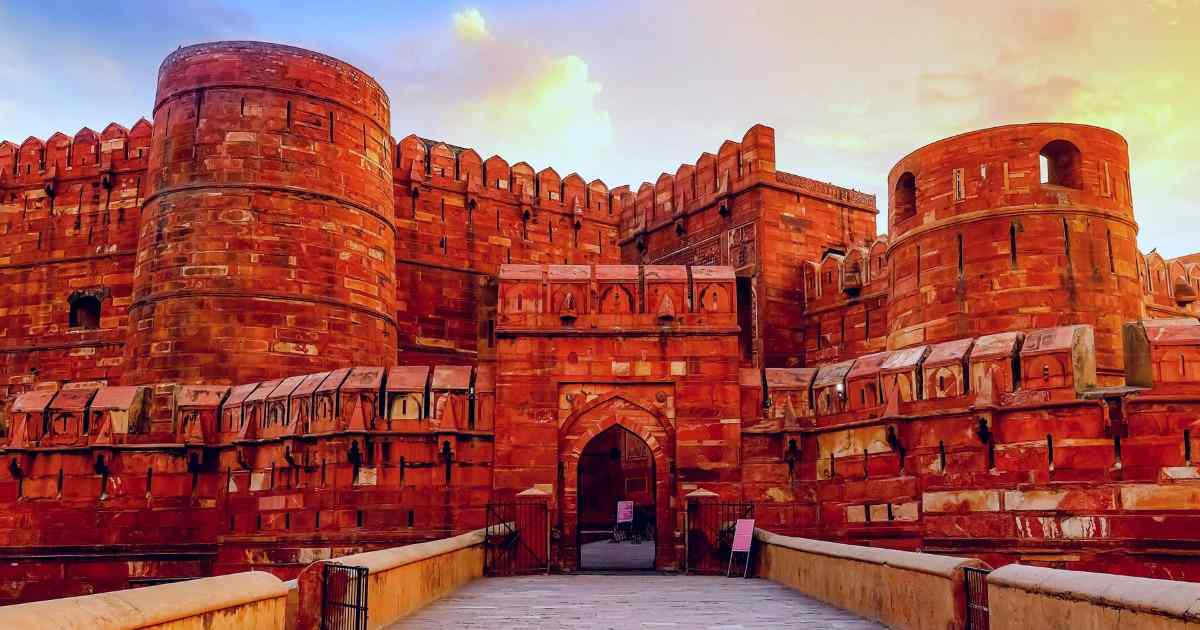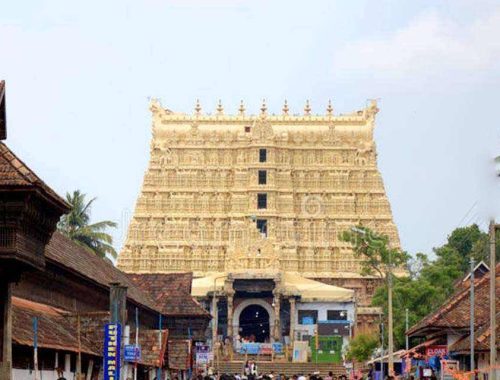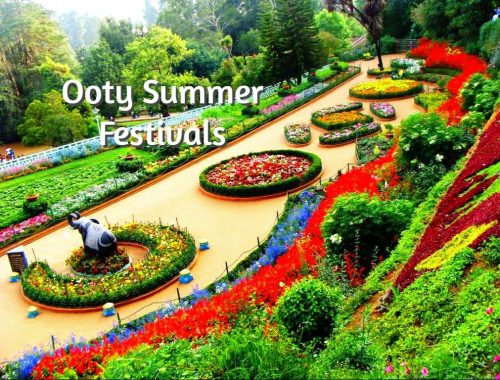
Red Fort: All You Need to Know About Delhi’s Iconic Monument
The Red Fort, standing tall in the heart of Delhi, is one of India’s most iconic landmarks. Built in the 17th century by the Mughal emperor Shah Jahan, it served as the royal residence for almost 200 years. Its massive red sandstone walls have witnessed the grandeur of the Mughal era, the struggles of colonial rule, and even the moment India celebrated its independence.
Today, the fort is not just a reminder of the past but also a major attraction that draws visitors from around the world. In this blog, we’ll explore its fascinating history, unique architectural features, and all the details you need to plan your visit. So, from timings and entry fees to nearby attractions you shouldn’t miss, we will cover it all. Keep reading!
History of the Red Fort
The Red Fort was commissioned by the Mughal ruler Shah Jahan in 1638, and its construction was completed in 1648. Shah Jahan, known for his grand architectural projects, moved his capital from Agra to Delhi, and the Red Fort became the center of his new city, Shahjahanabad. The fort used to be the main residence of the Mughal emperors for approximately 200 years until British colonial rule began in 1857.
The fort’s design reflects the pinnacle of Mughal architecture, blending Persian, Timurid, and Indian styles. It was originally known as “Qila-e-Mubarak,” meaning the Blessed Fort, and its walls, made of striking red sandstone, give it its famous name.
Architecture of the Red Fort
The Red Fort spans over 254 acres, enclosed by a 2.5-kilometer-long wall. Its architecture showcases the grandeur of Mughal aesthetics, with intricate carvings, beautiful gardens, and grand halls. The fort’s layout is a perfect example of the Mughal garden design, characterized by the famous Charbagh structure, a quadrilateral garden divided by walkways or flowing water.
Some of the key structures within the Red Fort include:
- Lahore Gate: This is the main entrance to the fort and is named after the city of Lahore, which is now in Pakistan. It is from this gate that the Indian Prime Minister addresses the country every year on Independence Day.
- Diwan-i-Aam (Hall of Public Audience): This hall was used by the emperor to meet with the general public and hear their grievances. It has a marble platform where the emperor’s throne was placed.
- Diwan-i-Khas (Hall of Private Audience): A more intimate setting, this hall was reserved for the emperor’s meetings with his courtiers and guests. The famous Peacock Throne, which was once housed here, was a symbol of Mughal opulence.
- Rang Mahal (Palace of Colors): This was the residence of the emperor’s wives and mistresses. The name “Rang Mahal” refers to the palace’s colorful interiors, adorned with beautiful mirrors and elaborate paintings.
- Moti Masjid (Pearl Mosque): A small yet elegant mosque built by Emperor Aurangzeb, Shah Jahan’s son, for his private use. The mosque is built of white marble and is an example of simple yet refined Mughal architecture.
Also Read: Iconic Indian Architects and Their Masterpieces
Significance of the Red Fort Today
Today, the Red Fort is not just a monument but a symbol of India’s freedom and sovereignty. After India attained independence from British rule in 1947, Jawaharlal Nehru, the first Prime Minister of India, hoisted the national flag at the Lahore Gate. It marked the fort as a symbol of India’s struggle for independence. This tradition continues every year. On August 15th, the Prime Minister of India addresses the nation from the Red Fort.

The fort has been recognized as a UNESCO World Heritage Site, acknowledging its historical and architectural significance. The Archaeological Survey of India is the one responsible for the fort’s maintenance and preservation. It ensures that the Red Fort remains a testament to India’s glorious past.
Visiting the Red Fort
The Red Fort is one of the most visited tourist attractions in India, drawing visitors from around the world. The fort is open to the public, and visitors can explore its grand halls, beautiful gardens, and museums from the Mughal era.
In the evening, the fort looks even more beautiful, and the spectacular sound and light show narrates the history of Delhi and the Red Fort. This show is a must-see for anyone visiting the fort, as it brings the rich history of this iconic monument to life.
Visiting the Red Fort is a must for any traveler to Delhi. Here’s everything you need to know:
Timings: The Red Fort is open to visitors from 9:30 AM to 4:30 PM every day, except Mondays, when it remains closed. The best time to visit is early in the morning to avoid the crowds and the midday heat.
Entry Fees
- For Indian citizens: ₹35 per person
- For foreign tourists: ₹500 per person
- Children below the age of 15 can enter for free.
- There is an additional fee for using a video camera.
Sound and Light Show: The Red Fort hosts a dazzling sound and light show every evening, which narrates the history of Delhi and the Red Fort. You can enjoy the show in both Hindi and English.
Hindi show
- May to August – 7:30 PM to 8:30 PM
- September to October – 7:00 PM to 8:00 PM
- November to January – 6:00 PM to 7:00 PM
- February to April – 7:00 PM to 8:00 PM.
English show
- May to August – 9:00 PM to 10:00 PM
- September to October – 8:30 PM to 9:30 PM
- November to January – 7:30 PM to 8:30 PM
- February to April – 8:30 PM to 9:30 PM.
How to Reach Red Fort?
The Red Fort is located in the heart of Delhi, making it easily accessible by various modes of transportation:
- By Metro: The closest metro station to the Red Fort is the Chandni Chowk station on the Yellow Line. From the metro station, the fort is just a short rickshaw ride or a 10-15 minute walk away. The Jama Masjid station on the Violet Line is also nearby.
- By Bus: Delhi Transport Corporation (DTC) operates several bus routes that pass near the Red Fort. You can take buses that go to Chandni Chowk or Jama Masjid.
- By Auto-Rickshaw or Taxi: Auto-rickshaws and taxis are widely available throughout Delhi and can take you directly to the Red Fort. Ensure to negotiate the fare beforehand or opt for a metered ride.
- By Car: If you are driving, there is parking available near the fort, but it can get crowded, especially during weekends and holidays. It is advisable to use public transportation to avoid traffic and parking hassles.
Nearby Attractions
When visiting the Red Fort, you can also explore several other attractions nearby:
- Jama Masjid: One of the largest mosques in India, located just a short walk from the Red Fort.
- Chandni Chowk: A bustling market area known for its narrow lanes, street food, and shopping opportunities.
- Raj Ghat: The memorial of Mahatma Gandhi, located a few kilometers away from the Red Fort.
- India Gate: A war memorial located about 5 kilometers from the Red Fort, an iconic landmark of Delhi.
Also Read: All You Need to Know About India Gate, Delhi
The Red Fort stands as a proud symbol of India’s rich cultural heritage and history. Its magnificent architecture, historical significance, and role in India’s independence make it a must-visit.
FAQs
What is the history of the Red Fort in Delhi?
The Red Fort was built by Shah Jahan in the 17th century and served as the royal residence and a political center for nearly 200 years. It played a significant role in India’s history, witnessing key events from the Mughal era to the country’s independence.
What are the visiting hours for the Red Fort?
The Red Fort is open to visitors from 9:30 AM to 4:30 PM, every Tuesday through Sunday. It is closed on Mondays.
How much is the entry fee for the Red Fort?
The entry fee is ₹35 for Indian citizens and ₹500 for foreign tourists. Children under 15 years of age can enter for free.
How can I reach the Red Fort in Delhi?
The Red Fort is easily accessible by metro, with the nearest station being Chandni Chowk on the Yellow Line. You can also reach it by bus, auto-rickshaw, or taxi.
What is the significance of the Red Fort?
The Red Fort is a symbol of India’s rich history and cultural heritage. It was the main residence of the Mughal rulers and played a vital role in India’s independence, as the site where the Prime Minister hoists the national flag every Independence Day.
Are there any special attractions at the Red Fort?
Yes, the Red Fort hosts a daily sound and light show that narrates the history of Delhi and the fort. The show is available in both Hindi and English and is a popular attraction for visitors.
Khushi Jha
I am Khushi Jha, a proud alumna of Delhi University with a degree in History and Political Science. My fascination with the events that have shaped our world drives me every day. Currently, I am pursuing my Master’s in History, diving even deeper into global dynamics and the incredible heritage of India. I firmly believe that India's rich heritage deserves wider recognition. I strive to bring its stories to the forefront, ensuring they are celebrated and acknowledged on a global stage. I have written extensively across various niches, including fashion, health, lifestyle, real estate, hospitality, amongst others. In my free time, you’ll find me immersed in books, both fiction and non-fiction, or simply enjoying some much-needed rest.
You May Also Like

This Indian Temple Contains ₹1 Lakh Crore Treasure (And You Can Visit It)
August 27, 2025
Khelo India Water Sports Festival 2025 to Begin at Dal Lake in Jammu & Kashmir
August 20, 2025



One Comment
Pingback: